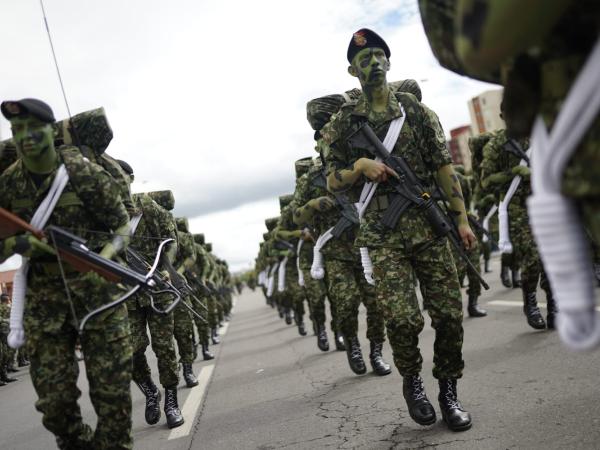Inflation runaway, critical decline in foreign exchange as well as a growing energy bill due to oil prices are some of the features of the profound crisis economy in which it is immersed Sri Lankaand that other highly indebted nations are at risk of replicating.
The crisis in Sri Lanka has been attributed to specific factors such as the poor management of the authorities or the double blow of the coronavirus and terrorism to the tourism sector by the demonstrators who have been protesting in the island country for months, overthrowing the powerful Rajapaksa dynasty and bringing down the president and various cabinets.
The managing director of the International Monetary Fund (IMF), Kristalina Georgia, highlighted last Saturday the “extremely uncertain” world panorama unleashed by the Russian invasion of Ukraine, as well as by the disturbances due to the coronavirus pandemic and the obstruction in supply chains.
“Countries with a high debt and limited policy space will face additional pressure,” Georgieva said from Indonesia, before warning that “no more than looking at Sri Lanka as a warning sign.”
In AsiaAs in other parts of the world, several developing countries such as Bangladesh, Laos, Nepal or Pakistan show worrying signs of falling into the same spiral as Sri Lanka.
BANGLADESH
With record inflation figures and imposing some measures to limit the use of fuels similar to those that Sri Lanka was forced to take, the situation in Bangladesh worries the government enough to go to the door of the IMF for the first time in a decade to obtain 4.5 billion dollars in loans.
The Asian country registered an inflation of 7.56% last June, according to the Bangladesh Bureau of Statistics, compared to 5.64% in the same period last year and the highest since 2014.
Inflation and the progressive devaluation of the taka against the dollar, which has lost more than 7% of its value this year alone, have also led to a fall in currencies below 40 billion dollars.
This week, Bangladesh approved the temporary closure of all diesel power plants and the closure of all gas stations in the country one day a week, as well as imposing two-hour blackouts, measures reminiscent of long queues in Sri Lanka’s gas stations and its daily blackouts of up to thirteen hours.
LAOS
Amid rampant inflation, a tourism sector thrown into disarray by the coronavirus pandemic, tight monetary policies by countries like the United States and the risk of defaulting on foreign loans, Laos could be the next Asian country on the verge of bankruptcy after Sri Lanka. .
So far this year, Laos’ currency, the kip, has slumped by more than a third against the US dollar, while public debt in the impoverished, landlocked country of 7.2 million has risen to 14.5 billion dollars, 88% of its GDP, in 2021.
Likewise, unlike Sri Lanka -which has a variety of creditors- Laos is fundamentally indebted to China and its debt with the Asian giant amounts to 45% of its gross domestic product (GDP).
To this is added the escalation in fuel prices, pressured by the war in Ukraine, and food, which has put the country’s communist government, led by the Lao People’s Revolutionary Party (PPRL) since 1975, in check.
These factors led to a perfect storm that made Moody’s rating agency downgrade Laos’ sovereign debt to “junk bond” last June.
NEPAL
The Himalayan country saw year-on-year inflation grow 8.56% last June compared to 4.19% during the same period in the previous year, according to the Central Bank of Nepal.
“Inflation will reach double digits in mid-July,” economist Keshav Acharya warned Efe, while the country struggles to acquire key chemical fertilizers for crops whose price has not stopped increasing.
“This could raise food prices or even cause a food crisis,” economist Dadhi Adhikari told Efe, recalling that “tourism, one of the main sources of foreign exchange earnings, has not yet recovered.”
PAKISTAN
Pakistan it is closer than ever to bankruptcy due to the same evils listed above: increasingly expensive imports, lack of foreign exchange and a crisis in the balance of payments.
At the request of the IMF, which has yet to approve the release of a tranche of more than 1.1 billion euros from the 6 billion financial assistance agreement, the government of Shehbaz Sharif has begun to cut gasoline subsidies and increase electricity prices.
But these measures have unleashed a spectacular increase in inflation, which last June reached 21.3%, the highest figure in the last thirteen years.
“The rupee is exchanged at 221 units per dollar, the lowest number in the history of the country (…). If this continues like this, we are not far from a situation like the one in Sri Lanka in Pakistan,” economist Muzzamil Aslam told Efe.






